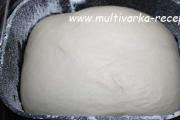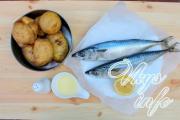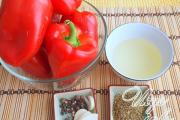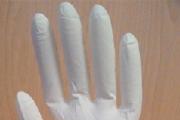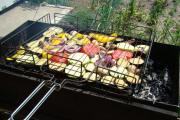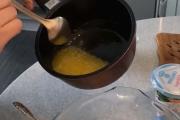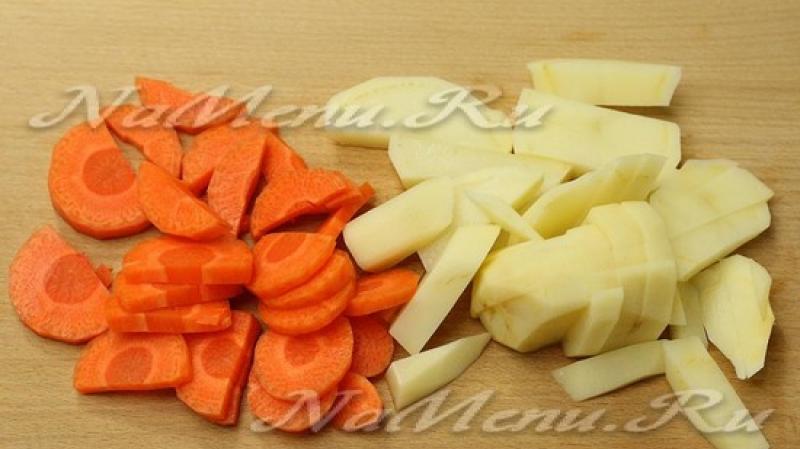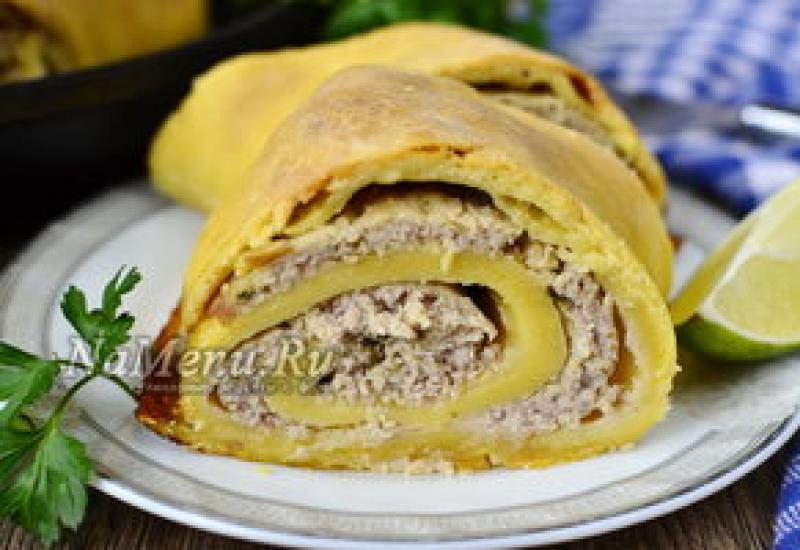Dried peppers: methods and recipes for cooking at home. Dried peppers for the winter
Several years ago, the fashion for sun-dried tomatoes came to us from Mediterranean countries. We bought small overseas jars of this preparation in the store, savored every bite and regretted that we could not afford to eat such a delicacy every day. Later, housewives learned to cook such tomatoes on their own, using a simple home oven as an assistant. Now in almost every refrigerator you can find a jar of home-cooked sun-dried tomatoes. But not everyone knows that other vegetables (and even fruits) can be prepared in this way.
Try to prepare a few red, ripe autumn peppers, and you will feel like a real “culinary sorceress”, able to please and surprise your loved ones with real masterpieces.
You can add dried peppers to salads, pies and sauces, or serve them with meat, fish and croutons.
Due to the fact that preparing spicy dried peppers for the winter does not require any special culinary skills, even an inexperienced housewife can make them. Therefore, feel free to take on the production of this real “masterpiece of taste and aroma.”
TIME: 5 hours
Easy
Servings: 8
Ingredients for 300 ml:
- 1 kg red pepper;
- oregano, savory, rosemary;
- allspice and black pepper, cloves;
- salt;
- olive oil (70 ml);
- 3-4 cloves of garlic.

Preparation
Turn on the oven to 100 degrees, let it preheat, we will also cook the peppers at this temperature.
Try to choose fleshy, brightly colored and ripe peppers from the market. When you get home, rinse it carefully, wipe it dry with a paper towel, and remove the core and seeds with a sharp knife.
Cut the juicy peppers into large pieces. 
Sprinkle each pepper with salt and herbs and place in the pan. 
Cook the peppers for 4-5 hours, turning each piece from side to side from time to time, the temperature in the oven should be about 80 degrees, many ovens do not allow you to reduce the temperature below 100 degrees, cook on this, but periodically open the door to let out excess heat. 
Peel the garlic and cut it into strips.
Place dried peppers, spices, and garlic tightly into a thoroughly heated jar.

Slowly pour the oil into a glass container in a thin stream, cover it with a lid and place it in the refrigerator.
Store spicy dried peppers in the refrigerator for 2-3 months; if you cook the pepper in September, it can “survive” until December, unless of course you eat it earlier.

Drying peppers is one of the many ways to preserve the valuable qualities of this vegetable during the winter. Compared to dried peppers, the taste of dried vegetables is much brighter and helps improve many dishes, including vegetable salads. In addition to the peppers prepared in the cellar, as well as frozen in the freezer, you can also enjoy the amazing taste of the dried delicacy.
Benefit
Almost all vitamins and microelements are preserved in dried pepper. It includes:
- Vitamins A, groups B, C, E and PP;
- Microelements: phosphorus, potassium, calcium, magnesium, manganese, sodium and iron.
Beneficial features:
- Increases the body's immune functions;
- Prevents the development of vitamin deficiency;
- Improves the functioning of the gastrointestinal tract;
- Strengthens hair and nails;
Dried pepper improves vision.
- Normalizes the functioning of the cardiovascular system;
- Prevents the formation of blood clots;
- Has a beneficial effect on the condition of the skin and mucous membranes.
Preparing the vegetable
Before drying, you need to select suitable peppers. They should have a sweet taste and a bright red or yellow color. Peppers not suitable for drying:
- Overripe;
- Wrinkled;
- With spots on the skin.
The pods chosen are juicy, fleshy, with dense pulp inside. Rinse the peppers well under running water and then dry on a paper towel. Cut large pods into quarters, medium pods into halves. Remove thin films and seeds. If you dry it without the skin, the pepper will acquire a richer and more delicate taste. To quickly remove the skin, you need to immerse the pepper in boiling water for 2-3 minutes, then cool in cold water for 2-3 minutes. Using a knife, carefully pry the skin and remove it from the pepper.
Sun-dried tomatoes and peppers in the oven:
Dried peppers: the most popular methods
To get dried vegetables, you can use an oven, microwave or electric dryer.
In the oven
Select the lowest temperature of the “convection” or ventilation mode. During the drying process, free air circulation inside is necessary so that excess moisture evaporates. In the absence of these modes, do not close the oven door tightly, this will help avoid the accumulation of condensation inside. Place parchment paper soaked in oil on a baking sheet. Place vegetables skin side down, forming small “boats” for filling with various seasonings.
The pepper is dried for an hour and a half, then it needs to be cooled a little, then heated again in the oven for about 40 minutes. The finished pepper should not be immediately removed from the oven; it should stand in it for a couple of minutes. You can start canning only after the vegetable has completely cooled.
In Italian:
In an electric dryer
Place the prepared vegetable in one layer on a special mesh or grill, leaving small gaps between the slices. To prevent the pepper from sticking and burning, it must be stirred and turned over every 30 minutes. The optimal temperature is 75 degrees. With sufficient airflow and careful observation, the pepper will cook in 3-4 hours.
Bell pepper:
In the microwave
Drying peppers in the microwave is a rather labor-intensive process. So that the pepper does not cook in its own juice, but gradually gets rid of excess moisture, it needs free access to air. First, the vegetable is washed, cut into slices, seeds and thin membranes are removed. Add a little oil to the pepper, put it in a deep plate and put it in the microwave. Set the power to maximum. After five minutes, remove the vegetable and drain off the excess juice.
After the pepper has cooled slightly, put it in the microwave again for five minutes. Repeat the procedure until the vegetable is completely cooked.
Recipes
A fairly popular way to prepare for the winter is to dry peppers in oil. You can prepare it according to the standard procedure, only generously grease each slice of vegetable with olive or sunflower oil.
Dried vegetables:
To give pepper a unique taste, housewives use different seasonings and spices. You can sprinkle the vegetable pieces with salt, black or red pepper. Marjoram or is also used. Almost every seasoning will make the preparation of dried peppers unique. To make the pepper sweet and piquant, sprinkle it with a small amount of sugar. Chopped garlic is added to the pepper “boats” for spiciness.
Storage of the finished product
REFERENCE: In order to increase shelf life, you can pour a tablespoon of vinegar into a jar of oil.
You can store the pepper in the oil in which it was cooked, this way the rich taste will be preserved. Place pieces of dried pepper in a small sterilized jar in a dense layer and completely fill with sunflower or olive oil. The oil should be 2-3 centimeters above the stacked peppers to prevent air from entering. The jars are stored in the refrigerator and used as needed.
As a result of drying, you will get an indispensable ingredient for preparing various salads or pizza. Dried peppers are consumed both ready-made and used as a decoration for meat or fish dishes. It also makes a great snack. Properly prepared dried peppers will serve as a guarantee of tasty and healthy nutrition, which is important during periods of exacerbation of viral diseases.

Sun-dried tomatoes in oil are a delicious snack that has captivated many with its excellent taste and aroma of herbs. Did you know that bell and bitter peppers are prepared using the same method? Today we will tell you about the secrets and benefits of making dried peppers at home.
Drying is one of the best ways to preserve perishable vegetables for the winter. These include pepper . The method is based on the principle of partial evaporation of moisture. The result is elastic slices that, when pressed, bend and do not crumble into dust.
In this matter, it is important to choose quality products and prepare them correctly. For drying, household appliances are used: microwave, oven, electric dryer.
The finished product is perfectly preserved in oil in the refrigerator or in glass containers without additives.
Bulgarian
To prepare delicious dried peppers, use these tips for selecting and preparing fruits:
- Buy vegetables with bright colors and thick flesh. They should not show signs of rot, stains or cracks.
- Wash the fruits in warm water and dry with a paper towel. Cut large ones into quarters, medium ones - in half. Remove the tails and seed pods. Peppers are sometimes peeled to enhance the flavor. But this is not a mandatory rule. Cook as you wish.
- To remove the skin, pour boiling water over the fruit and leave for three minutes. Then transfer to cold water. Using a knife, lift the peel and quickly remove it.
- Before starting the drying process, grease the peppers with vegetable oil, sprinkle with spices and chopped garlic. Add a little sea salt or sugar. This will enhance the taste of the product.
Spicy
The rules for preparing hot peppers are no different from preparing sweet fruits:
- Choose peppercorns with thick flesh and a smooth and elastic surface.
- Wash the fruits, dry them and cut them into halves. Cut off the stem and remove the seeds. Rinse the slices under running water and remove the internal membranes. If you want the heat to remain, leave some of the seeds.
- Place the peppers on a baking sheet, drizzle with oil as desired and sprinkle with spices and dry herbs.
Advantages and disadvantages of the method
The main advantage of drying peppers is the ability to preserve most of the vitamins and minerals necessary to maintain immunity during the cold season. Compared to dried peppers, the taste of dried peppers is brighter and richer.
With regular use of the product, the condition of hair and nails improves. A large amount of fiber normalizes the functioning of the intestines, and consequently, other interconnected systems of the body.
Potassium and magnesium regulate the functioning of the heart and blood vessels, prevent the formation of blood clots, and promote blood thinning. Pepper has a beneficial effect on the condition of the mucous membranes and skin.
The calorie content of dried peppers without additives in the form of vegetable oil and spices is 118 kcal per 100 g.
There is no need to talk about the disadvantages of drying peppers. Here are some solid advantages:
- not too time-consuming;
- can be stored for a long time in dry form and even longer in oil filling;
- the product does not lose its taste and is able to enrich dishes made from cereals, meat, flour, and other vegetables.
How to cook dried peppers
 To prepare dried peppers, household appliances are used: microwave, oven and electric dryer. Each of their methods has advantages and disadvantages. Let's talk about them in more detail.
To prepare dried peppers, household appliances are used: microwave, oven and electric dryer. Each of their methods has advantages and disadvantages. Let's talk about them in more detail.
In the oven
Modern ovens are equipped with many useful features. One of them is convection, which allows you to dry any fruits and vegetables without much effort.
The mode ensures free circulation of air inside. Thanks to this, excess moisture quickly evaporates. If you have an older oven model, simply keep the door ajar.
Preparation:
- Prepare the peppers by covering a baking tray with baking paper.
- Place the pieces skin side down. You can put garlic, spices and oil inside the boats.
- Set the temperature to 100-120°C and leave for 1.5 hours.
- Turn off the oven, leave to cool for a while, then set the same temperature and cook for 40-60 minutes.
- Leave in the oven until completely cool.
In the dryer
Drying peppers in an electric dryer is as easy as shelling pears:
- Place the prepared vegetables on the racks, leaving space between the slices.
- Set the temperature to 75°C. Check the vegetables every 30 minutes and turn if necessary. Remember that the peppers should not dry out completely.
- The preparation time for the product is 3-4 hours.
In the microwave
Microwave dried peppers are the most difficult to prepare. It is necessary to constantly be on the alert and monitor the vegetables. The main task is to prevent the vegetables from being cooked.
Preparation:
- Place the prepared vegetables on a plate and pour over the oil.
- Set the maximum power and cooking time to 5 minutes. Then remove the plate and drain the resulting liquid.
- Cool the slices and repeat the procedure 3-4 times. Don't forget to drain the juice every time.
How to check readiness
The readiness of the product is indicated by the wrinkled skin. The pulp will decrease several times. The pieces are elastic to the touch, dried, but not overly dry. A small percentage of moisture should remain in the pepper.
How to store dried peppers
Dry dried peppers are perfectly preserved in glass containers with lids. But most often, the slices are poured with the aromatic oil in which they were cooked, or a filling is prepared based on it with the addition of spices.
Any vegetable oil will do - olive or sunflower. It should completely cover the vegetables and be two centimeters higher than their level.
Peppers in oil are stored in the refrigerator or in a cool, dark place.
Dried peppers for the winter in oil
To prepare dried peppers in oil, use a simple recipe (the photo shows the finished result). 
Ingredients:
- bell or hot pepper – 1 kg;
- extra virgin olive oil – 50 ml;
- balsamic vinegar to taste.
Preparation:
- Wash the peppers, dry them, remove the stem and core. Rinse with cold water and place cut side down in a bowl. This will ensure free flow of water.
- Line a baking sheet with parchment or grease with oil. Arrange the slices.
- Preheat the oven to 120°C, place the baking sheets and cook for 3-4 hours. Gradually reduce heat to 110°C.
- Remove the vegetables after the cooking time has passed and leave to cool.
- Heat the vegetable oil in a water bath or in the microwave. Add garlic if desired.
- Place the peppers in a jar, pour in warm oil, add a little balsamic vinegar and close the lid.
Reference. Vinegar extends the shelf life of the product.
Store in the refrigerator or cellar.
In seasonings and spices
Dried peppers in aromatic herbs and spices will delight you with a rich taste and pleasant aroma.
Ingredients:
- sweet or bitter pepper – 1 kg;
- rosemary, thyme, oregano;
- salt, black pepper - to taste;
- Extra Virgin olive oil – 80 ml;
- garlic – 3-4 cloves.
Preparation:
- Wash the vegetables, peel them, rinse with water. Cut into 2-4 pieces depending on size.
- Cook in the oven at 100°C or in an electric dryer at 75°C. Adjust the time as you wish and constantly monitor the slices so as not to dry out.
- Peel the garlic and cut into thin slices.
- Place chilled peppers in a glass container, add spices and garlic.
- Pour in olive oil and close the lid.
Store in the refrigerator on the top shelf.
Chef's Notes
Dried peppers are a delicious snack with a wonderful taste and aroma. It is consumed on its own, added to salads, meat dishes, pizza, spread on croutons, and combined with other vegetables and cheese. For preparations, select undamaged vegetables without stains or rot.
This is very convenient in the household - during the season you can collect and dry almost any fruits and vegetables, put them in small containers, and in winter and spring use them for a variety of purposes - in soups, sauces, desserts, and in almost any dish.
Everyone has long known that dried and dried products are flavor enhancers, because only moisture has been removed from them, and accordingly all other parameters, and primarily taste, acquire a higher concentration. Our distant ancestors actively dried mushrooms, apples, herbs, bay leaves, spices, etc. Today, a jar of sun-dried tomatoes is considered a delicacy in Mediterranean cuisine, but preparing this luxury at home is not at all difficult. Today I want to show you my proven (and hard-won) recipe for sun-dried gourmet tomatoes and sweet peppers - I’ve been cooking this way for 5 years now, only sometimes I vary the spices...
By and large, we call them “dried” not entirely correctly, because... This drying process involves keeping the product in a well-ventilated area with a temperature no higher than 40 degrees. My BaMasha always dried the bream that my grandfather brought from fishing this way - she salted it and hung it on the balcony at a decent distance from each other. The family didn’t eat this fish, but it always went well as gifts for beer lovers.
With vegetables without special premises, this process is somewhat difficult in our middle zone, so we have all adapted to transfer this process to ovens, some even call sun-dried tomatoes, essentially already baked at t = 120C. This is a matter of taste, but it would be more accurate to call this process low-temperature baking, but such are the traditions.
In fact, everything is very simple, but there are some tricky little things, without knowing which you end up with a low-quality product. The bottom line is that the products must be prepared and dried to the extent that is personally pleasing to you. At least three gradations are known - a) until completely dried, b) until 70% of moisture is lost and c) the so-called salad version, when the tomatoes have barely set and have lost no more than 30% of their weight. In the first case, the product can be stored for a long time even without additional spices, but will require further manipulation before use in the form of steaming in oil with liquid. The salad version lasts only in the refrigerator and then for no more than a month; it is used specifically in salads and on sandwiches. Therefore, for long-term storage (at least until the next season) outside the refrigerator, option b is ideal - dehydrate at low temperature (50-60C) for about 6-8 hours in convection mode, followed by pouring hot oil. That's exactly what I do!
I wash the peppers and tomatoes, remove the seeds and membranes, allow the remaining liquid to drain (I place the halves on paper towels with the dome up) and place them on a baking sheet with foil + literally a few crystals of coarse (!) salt on each slice. If the tomatoes don’t seem sweet enough to me (a lot depends on the weather), then I can add a couple of sugar crystals, but this rarely happens... 
Next, I put it in the oven at 60C, first for 3-4 hours, because... the pepper cooks faster. I use a ground one with not the thickest walls... 
By the time it is ready, utensils and spices should be prepared. I sterilize the jars in the microwave with a small amount of water or in the dishwasher, and keep the lids in boiling water for 10 minutes.
As additional preservatives and flavorings I use garlic (coarsely chopped or finely chopped - a matter of taste), dry herbs and peppercorns (usually pink, sometimes black, and sometimes not at all)… 
Sweet peppers are ready when the petals are curled and their edges are slightly blackened, but the tomatoes at this moment are just salad, you can immediately cook something with them, but I’m moving on... My tomatoes are fleshy, and I need to continue them dry for the same amount of time. I think it’s clear that varieties like cream or dense cherry are suitable for this technique...
Now we act at a pace - we need to maintain the temperature of the vegetables, quickly pour hot oil and seal. If there is a hitch at this point, the product will not take place. So, carefully but quickly I transfer the peppers into a hot jar, sprinkling them with spices, on top of one lettuce tomato skin side down, it is into this that I will pour hot oil and it will “get there”. This has also been proven by experience! By this time the oil should be well heated, but not boiling, otherwise we will get a volcano, because we have retained some of the liquid in the vegetables. I usually put a couple of paper towels in the sink, place the jars on them, pour in the oil up to the hangers with a precise and gentle movement (this is convenient to do using an old coffee pot with a spout), if the oil doesn’t sizzle at all, it means it still needs to be warmed up, otherwise the trick is Storage outside the refrigerator will not work. If you overheat the oil and splashes still fly in all directions, then you should wait 30-40 seconds so that it cools down a little - too hot oil will burn the top couple of layers. When I first started learning this technique, I didn’t even have a thermometer, but empirically I found out that the oil at the correct temperature should only hiss and produce small bubbles like these... 
Why do you need one tomato slice? You can, of course, pour it on peppers, but there is a chance that they will turn completely black and taste bitter. Checked! It is more convenient to do this in the sink, because... It is easier to clean the sink from oil than all other surfaces - no matter how hard you try, a few drops of oil will definitely spill past. I put towels so that later they can be used to conveniently remove the hot jar. All that remains is to roll it up with a hot, dry lid and turn it over.
After 3-4 hours, the tomatoes also begin to look like peppers - they curl a little, and in some places they can turn black along the edges... 
We repeat the same procedure as with peppers... One baking sheet takes 10 medium tomatoes and 5 peppers + salt and sugar, 150-180 ml vegetable oil, half a head of garlic, 1 tbsp. herbs, pepper to taste. Yield: 2 cans of 0.25 l each.
Try squeezing 10 tomatoes and 5 peppers into a half-liter jar...))) Can you imagine how much flavor is concentrated in these little ones... 
And the last thing about tomatoes - I don’t recommend placing vegetables very tightly on a baking sheet, the process will increase for another couple of hours at this temperature (60C), and it’s also not advisable to raise it, otherwise they won’t be sun-dried tomatoes at all! I tried many times to save time by raising the temperature to 100C - well, the effect is not the same! This is confirmed by all my friends and acquaintances who always perceive my mini-mini jars as a big, big gift and are waiting for the next time they will experience such happiness... Although the taste and color...
I prepare eggplants in exactly the same way - I cut them into petals and pucks, dry them for 5-6 hours in convection mode at low temperature, put them in hot jars, alternating with salt, garlic and herbs, pour in hot oil and immediately roll them up. They are also great for storing at home, but if you don’t want to use oil for eggplants (I know that not everyone likes this combination), then, of course, you should only store them in the refrigerator! 
How to use sun-dried tomatoes can be discussed endlessly, but I use peppers for pesto rosso (they sound just great there), in salads and soups like minestrone. You can very quickly wrap eggplant petals into rolls with any filling if guests suddenly arrive, and eggplant pucks go great in vegetable sandwiches with tomatoes and cheese, in pasta, in mousses and sauces.
Bon Appetit everyone!

